Moving the Stati-Sticks: Post-Colorado

[Fuller/MGoBlog]
After two games that took barely over a quarter each to hit the criteria for garbage time, Michigan got their first real test of the season last Saturday. The players all said it was good for the team in the postgame presser, and it was also good for the numbers, as there’s now a substantially larger set of data from which to drawn way-too-early conclusions.
By and large, Michigan’s numbers are still pretty shiny. Wilton Speight, whose elbow was injured early in the game, is completing 63.8% of his passes for 7.7 yards per attempt. The top four receivers are all averaging over nine yards per target. De’Veon Smith, so long thought of as a three-yards-and-a-cloud-of-dust back, is averaging 5.6 yards per carry, getting more than five yards past the line of scrimmage on 37% of his carries, and averaging 6.6 extra yards per carry beyond those first five yards on the 37% of runs that get there. There aren’t the same types of individual stats available for players on defense, but that side of the ball has been excellent in all areas save one: explosive plays allowed.
On that note, there’s been a ton of discussion over the last week about the defense in various corners of the internet and on the airwaves filled by sports talk radio commentators and callers. Is there real cause for concern after a couple of bad quarters? If there is, what exactly do the numbers say are the areas that are most distressing? Can stats tell us whether these look to be persistent issues, or are they one-off miscues?
[After THE JUMP: LET’S FREAK OUT vs. EVERYBODY STOP FREAKING OUT]
We’ll begin with the 1,000-foot view, and the view’s still about as nice as it was before the Colorado game in terms of wins--and not so nice otherwise. ESPN’s FPI projects Michigan to win 10.6 games, along with a 9% chance to win out and a 26.3% chance of winning the conference. That’s just 0.2 wins less than last week, but Michigan’s win-out and conference championship odds took a dive—particularly conference championship odds, which fell from 39.8% to 26.3%—thanks to a resurgent Ohio State team that’s now expected to win 11.3 games, up from 10.0 before knocking out Oklahoma last weekend.
Before we dig into the meat of what’s been happening and, in particular, what happened last week, we’ll look through Bill Connelly’s Five Factors. I split these out such that each factor has its own graph this week, as unbunching the data works a lot better when some things are in terms of percent and others in terms of points or yard-lines.
Efficiency measures how often the offense was on track (or, from the defensive perspective, how often the opposition was on track). Michigan’s still moving along at a clip above the national average, while the defense is holding teams to a stellar 21.3% SR. To put that in plain terms, opposing offenses are getting half the needed yards on first down, 70% of needed yards on second down, or 100% of needed yards on third or fourth down on less than a quarter of their snaps. I know, I know, I heard your voice do that little reflexive crack thing where you want to have a retort but don’t have anything consciously pulled together. Don’t worry, what you’re looking for…
…is right here. Yeah, the defense has given up some big plays. Like, really big plays. And yes, this is a persistent theme through the first quarter of the season. To get a better feel for what you’re looking at I highly recommend this Bill Connelly piece, but the short version is that IsoPPP measures how explosive a team was on only their successful (success=the Bill Connelly definition above) plays. That number is the points per play value of said successful plays; long story short, teams aren’t often successful against Michigan’s defense, but they’re breaking off huge plays when they are.
So, uh, thanks, Jabrill.
The offense’s number against Colorado was 4.43 points per trip inside the 40 on seven opportunities, so they did see a bit of a drop from the first two weeks of the season. The defense faced five scoring opportunities and ceded 4.2 points per, which is far and away their highest number of the year. Worth noting, however, is that Colorado had an unusually high 17 drives in the game. Nothing to freak out about here.
First, a note about the structure of the graph. Some folks noted last week that one of the bars was scraping the top of the Y-axis, and for whatever reason I can’t find a way to create a custom axis in the program I’m using. Stacking the two worked, and I think it still gets the information across nicely. Michigan’s had a little turnover luck this season, though the tailed off a bit this past week after finishing the Colorado game –1. “Little” was the operative word in the previous sentence, as they don’t currently stand to see a ton of progression or regression to the mean.
The needle didn’t really move all that much in the aggregate when the data from the Colorado game was included in the Five Factors. Michigan’s offense is still starting with incredible field position and making the most of it thanks to excellent efficiency. For those few times they aren’t starting in or near opponent territory, a fair bit of explosiveness is helping. They’re still net positive in turnover margin, and a bump in the road by way of two missed field goals and a made field goal explains why their points per trip inside the 40 was on the low side.
The thing that jumps out most is the explosive plays given up by the defense. Though the defense’s Efficiency stayed impressive, it seemed as if Colorado was able to move the ball at will for a couple quarters before the wheels fell off. It’s worth looking a little harder at the ways in the defense is allowing big plays, because this…
…is pretty ugly. Bear in mind that those numbers in parentheses are national ranks. First, we’ll look at the additional information we have about the rush defense.
That’s quite good, actually. In no category is Michigan lower than 34th nationally (Power Success Rate); they’re first overall in Success Rate. This graph shows us that when teams run, they aren’t picking up the needed yards to stay in advantageous down-and-distance situations (Success Rate), their lines aren’t getting good push (more than five yards; Opportunity Rate), their lines can’t grind out yards in <2-to-go situations (Power Success Rate), and runs are often ending in the backfield (Stuff Rate). The only stat that’s cause for concern is Rushing IsoPPP. When teams are breaking a run they’re breaking it big, but they aren’t able to do so with anything resembling frequency.
The story remains the same through the air. The same statistics aren’t available for pass defense, but Michigan’s Passing Success Rate is 24.5%, good for sixth nationally. Again, they aren’t getting bled to death by paper cuts. It’s more like a video game, where they don’t notice the heinous alien lurking around the corner, get vaporized the second they cross its path, and then get to restart from the nearest checkpoint.
Teams have decided to take to the air against Michigan; standard and passing downs run rates are both below the national average. Looking at those two situations, Michigan isn’t a bend-but-don’t-break defense in either. They rank fourth in standard downs Success Rate (25.5%) and sixth in passing downs Success Rate (15.4%). Conversely, they rank 124th in standard downs IsoPPP and 49th in passing downs IsoPPP. The numbers—at least, the ones that are useable at this point in time—say that Michigan is a break-but-don’t-bend defense.
This is where it’s nice to have additional information to provide context. It’s easy to take a quick glance at Don Brown’s defensive philosophy, assume constant blitzing=big busts, and move on. If you haven’t already done so, I recommend reading this presser transcript to get a better feel for Brown’s defensive philosophy. What the numbers tell us is that the busts have been big and mostly through the air, but they’ve been infrequent and Michigan’s not giving up these plays when they’ve got teams in down-and-distance situations favorable to the defense. What the players and coaches can tell us is that they’re still tinkering with alignments and working to teach players the entirety of the defense, and they’re doing so without three high-level players. With most of the busts coming via the pass, it’s not a bad time to get a returning All-American back at corner.
Looking Ahead
Saquon Barkley is an excellent running back. Penn State’s offensive line is not excellent. They are, in fact, probably really bad. Again. Barkley’s averaging 5.1 yards per carry. Only 33.3% of his runs get more than five yards past the line of scrimmage (the first hint that the line’s not that good), but he’s averaging 7.3 highlight yards per opportunity; in other words, when he does get more than five yards past the line of scrimmage, he tacks on an average of 7.3 additional yards.
The problems start with the line getting Barkley (or occasionally McSorley) hit in the backfield on 23.8% of runs, good for 105th in the country. They’re exacerbated by the line’s inability to open holes that allow runs of at least five yards—their Opportunity Rate is 35.1%, 103rd nationally—and the line’s inability to grind out a couple of yards when needed—their Power Success Rate is 53.8%, 105th nationally. It comes as little surprise, then, that their Rushing Success Rate is 42.0%, 76th nationally.
That’s not to say that their offense is totally inept. Their Passing Success Rate is 44.2%, a respectable 46th overall. They’re picking up some big plays as well, as their Passing IsoPPP is 1.86, which puts them 17th in the country in passing explosiveness. Trace McSorley’s stat line is impressive, as he’s connecting on 64.4% of his passes for 8.3 yards per attempt. The numbers tell us that Michigan’s going to need a healthy dose of guys cleaning things up in the film room to slow down Penn State’s aerial attack; Jourdan Lewis’ presumed return will certainly help, assuming there’s not too much rust to shake off. Ace’s FFFF scouting, however, tells us that maybe a little rust is fine.
September 23rd, 2016 at 4:41 PM ^
One thing that's aggrevating is how we can be 3-0 and have our conference champion expectancy drop below another team...
September 23rd, 2016 at 6:37 PM ^
September 24th, 2016 at 12:08 AM ^
September 23rd, 2016 at 4:43 PM ^
Let's Freak Out or Everybody Stop Freaking Out?
September 23rd, 2016 at 4:53 PM ^
Levels of worry:
1) Offensive line
2) Speight's consistency
3) Giving up big plays
4) Sudden erraticness of Kenny Allen
September 23rd, 2016 at 5:49 PM ^
1) Three tough road games remaining, and that's pretty much it for me.
September 23rd, 2016 at 5:23 PM ^
September 24th, 2016 at 12:14 AM ^
September 23rd, 2016 at 5:38 PM ^
September 23rd, 2016 at 6:12 PM ^
neg's., Brown defense is high risk. Big plays should not surprise anyone. They will continue as long as he maintains his aggressive philosophy. I don't see that changing until they face a more or equally talented team i.e. OSU and MSU.
September 23rd, 2016 at 7:30 PM ^
"Again, they aren’t getting bled to death by paper cuts. It’s more like a video game, where they don’t notice the heinous alien lurking around the corner, get vaporized the second they cross its path, and then get to restart from the nearest checkpoint."
Bravo.
September 23rd, 2016 at 9:26 PM ^
September 24th, 2016 at 12:23 AM ^
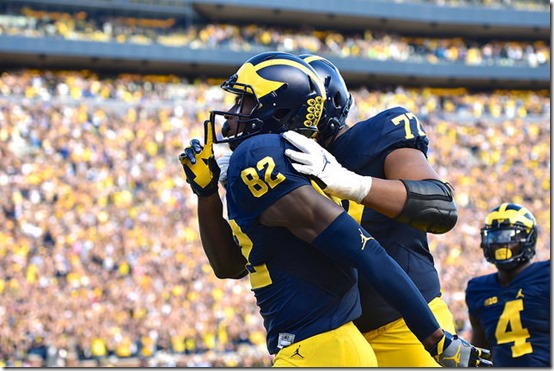
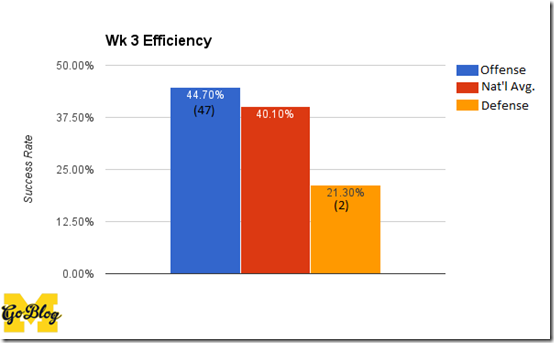
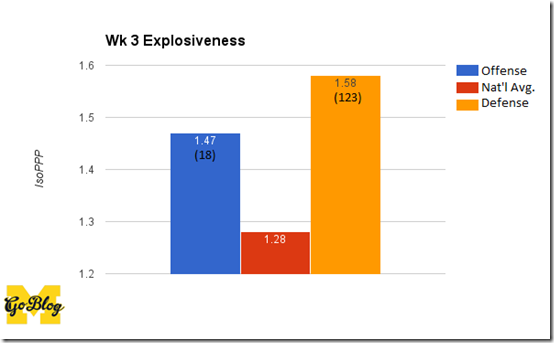

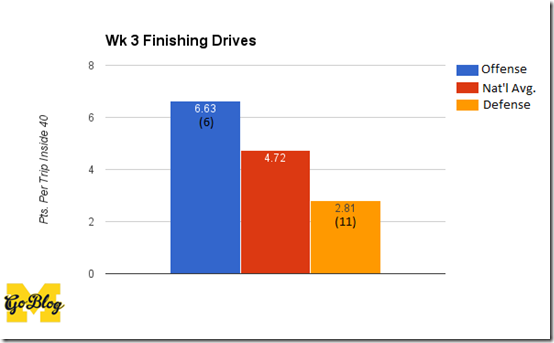
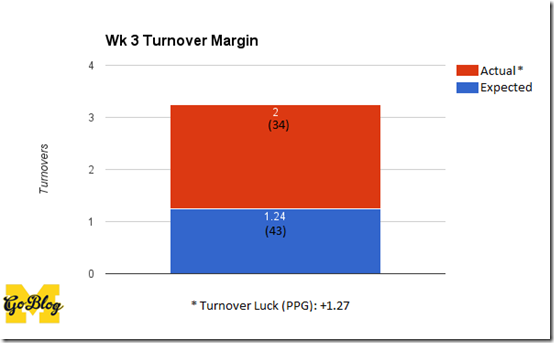
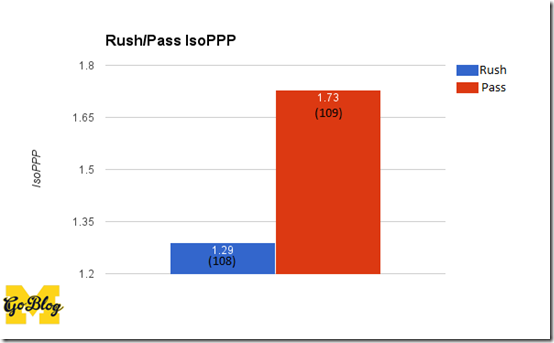
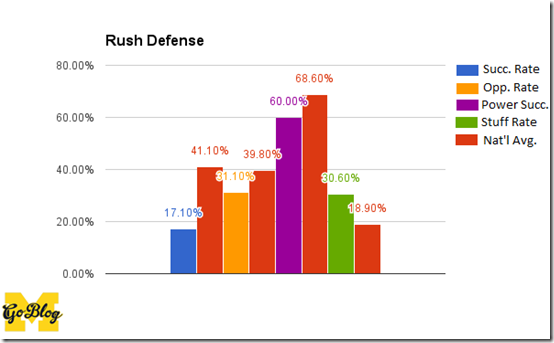
Comments